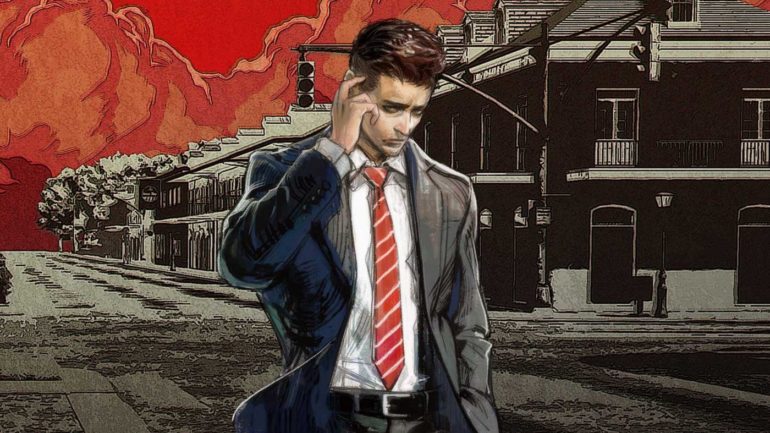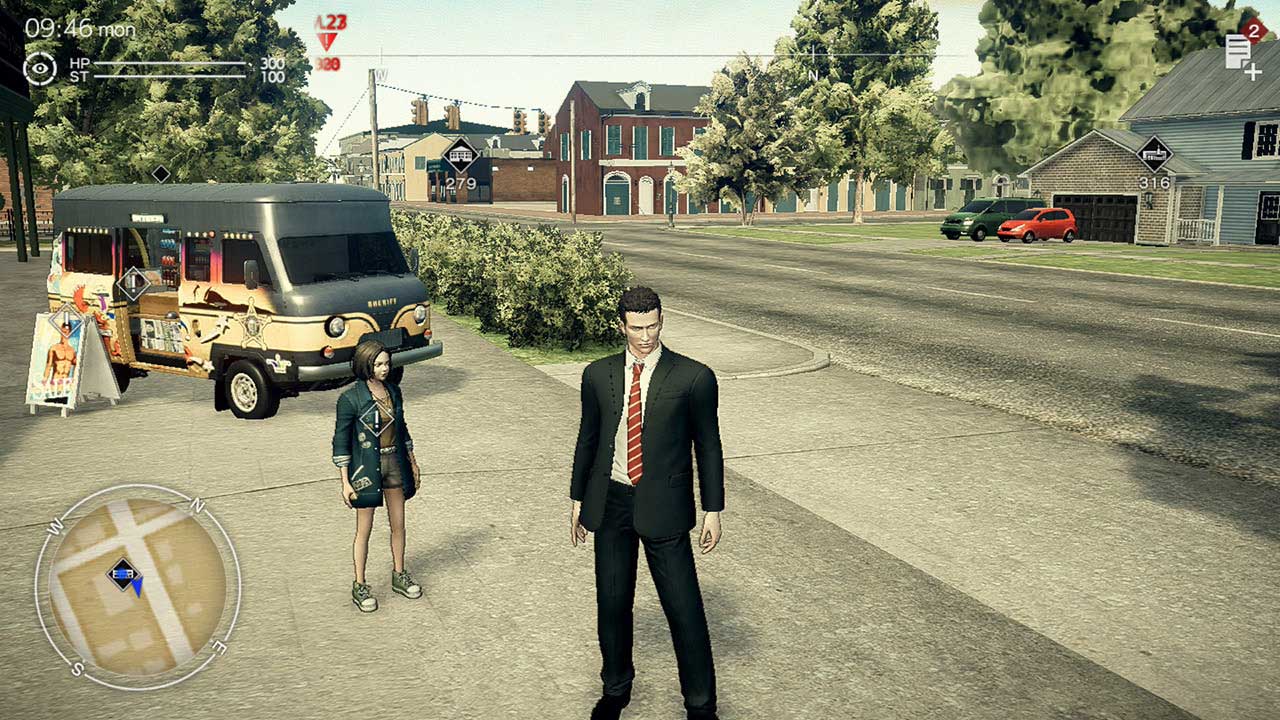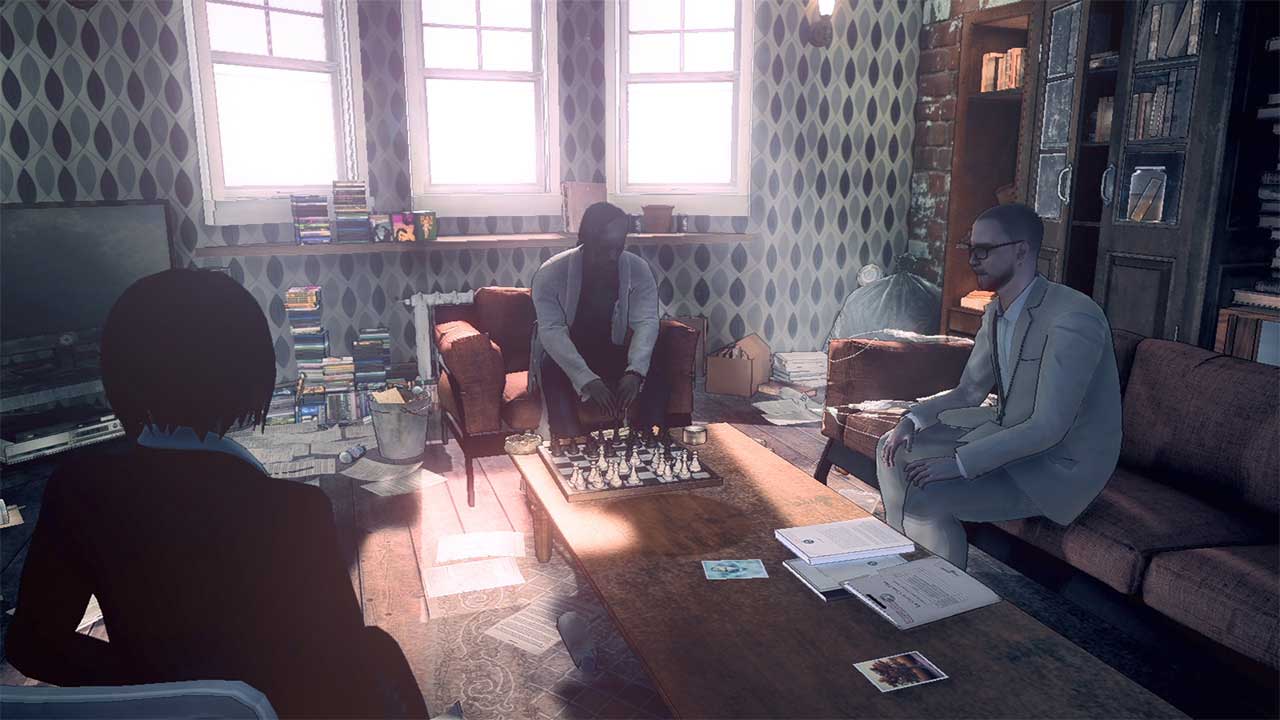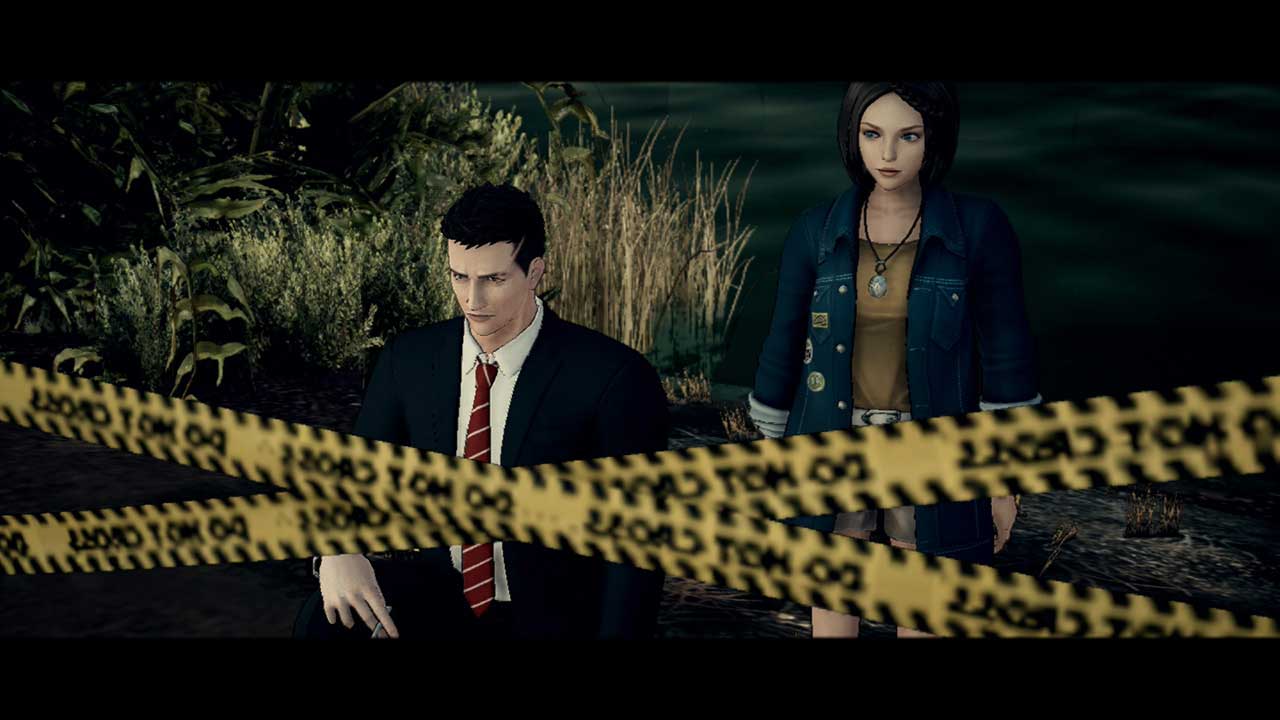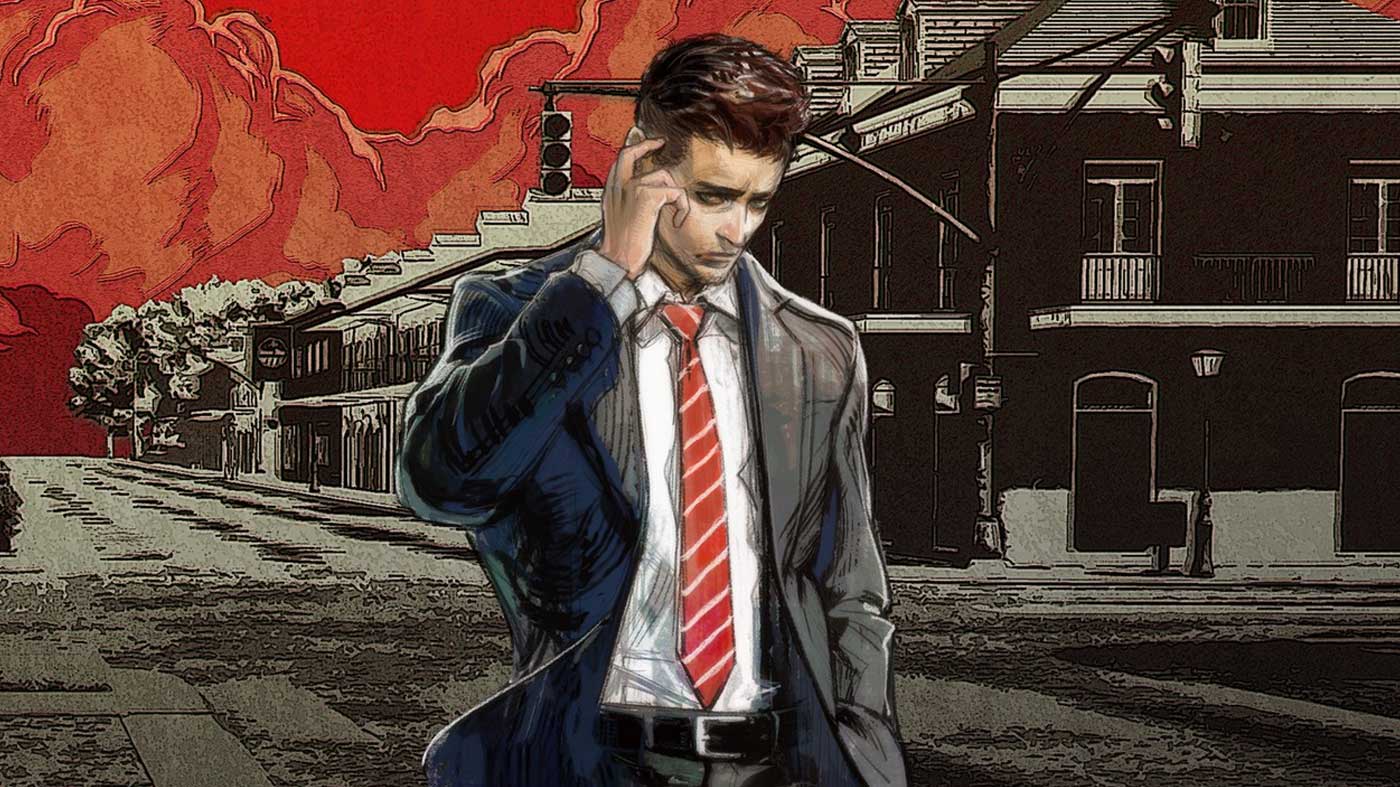Deadly Premonition was a bizarre game, the ultimate example of a game being greater than the sum of its parts. The poor performance, the stilted delivery, and the nonsensical mishmash of obvious homages and drama series tropes all lent themselves to a charming yet technically flawed experience. Ten years later, it feels like I should be beyond thankful we even were able to experience Deadly Premonition 2: A Blessing In Disguise. While the existence of a sequel to one of my favourite games is an exciting prospect, it fails to capture absolutely everything that made the original so unique.
Deadly Premonition 2 splits itself across two different cases. The first follows agent Aaliyah Davis and her questioning of a suspect thought to have connections to a case in the past with loose ends. The second takes place in the past, before the original games’ events, and follows agent Francis York Morgan. He investigates the murder of a young girl in the quaint southern town of Le Carre. You will spend much of the story in Le Carre, though it all wraps itself up nicely at the end.
While the story is nowhere near as outlandish as the first game, fans of the original will appreciate that Deadly Premonition 2 more or less follows up on the original game in a great way. Those who haven’t played the first game should consider it. Many of the plotlines won’t make anywhere near as much sense as they should, especially in the game’s final act if you haven’t played the original. I appreciate the willingness to commit to telling a story and not dumb it down for newer audiences, personally. However, the Le Carre storyline alone works well as a standalone mystery to solve.
As a game, however, Deadly Premonition 2 is wildly inconsistent. When playing as York in Le Carre, the game lets players similarly explore the world as in the original. You can skateboard around, play some absurd minigames, and complete side quests for the locals, depending on their daily schedule. It’s a great idea on paper, but the way the game tracks schedules and quests are a dramatic step back from the original game. Couple with other factors – such as long load times and poor performance – and Le Carre can be a chore to explore at times.
Gone are cars too. They drive by every now and then, but otherwise, York can get around on his trust skateboard. Justified narratively in a way that only Deadly Premonition would, the skateboard is a much more convenient method of getting around the town. It’s implausibly fast, mind you, but it’s ridiculous enough to be genius and something I wouldn’t change about the game. If you fancy, you can upgrade the board to improve speed and handling, though the board behaves so wildly I’m not sure you’d want to. It’s dumb, but it’s fun, and that’s all that matters.
When you’re not enjoying the sunny streets of Le Carre, the game often plunges you into dungeons to battle with bizarre demons. These moments are the “meat” of Deadly Premonition 2 and play like any typical shooter. These moments improve on the original game in some ways – namely there’s no longer bullet sponge type enemies and the general gunplay feels tighter – but the encounters all boil down to the same design. It’s hard to not find that repetitive and somewhat tedious as the later levels get longer.
Another step in the right direction, but at the same time a frustrating step backward, is the games boss battles. These mostly begin in the same way but ultimately devolve into the same schtick – to just fire at the enemies until they die. It feels like a missed opportunity because these boss creatures are all designed fantastically. Still, the battles all end up feeling the same because of how simple they are in design.
The combat can be bolstered by a light crafting system that allows York to fashion certain objects into charms and bracelets at the local voodoo shop to improve aspects of his character. Cultural sensitivity issues aside, the system feels kind of pointless – I was able to get through the game without even finding a need to utilise them. Still, they’re a helpful crutch for more novice players to lean on and something else for completionists to do.
The other side of the game, where you play as agent Aaliyah Davis, is where most of the intrigue lies. Playing out mostly like a visual novel, it sees Aaliyah questioning a suspect about the Le Carre case and trying to outwit them to admit something incriminating. While these are the more linear aspects of the game – you literally just select options to advance the conversation – they were by far the most intriguing and engaging.
All in all, both the cases will take roughly fifteen hours to complete if you breeze through it, though there’s a bunch of side content to get through. Each of these stories adds a little more to the story of Le Carre’s denizens, though it’s hard to ignore that the cast is smaller than the previous game. There’s even a bunch of minigames to participate in – all nonsensical, but still fun. Skateboard courses, ten pin bowling, and crocodile shooting (while riding an airboat) are just some of the distractions you can expect in Le Carre.
That being said, the game’s glaring performance issues could quickly put players off from experiencing everything the game has to offer.
I’m usually a player who doesn’t care too much about bad performance – I grew up in the era of the Nintendo 64 after all – but Deadly Premonition 2 is truly something else. When indoors, the game runs well enough, but when out and about exploring Le Carre the game chugs almost to a complete standstill, especially when enemies are on the screen. The original game had some performance issues, for sure. That unwittingly contributed to the game’s zany sense of charm, but this is downright going to be unplayable for some players and quickly worse than the original game.
Stalwart fans of the original game will defend these issues, saying they’re intentional. Still, when these issues hinder the flow of the game, it’s hard to argue for their artistic merit. Jumping between locations takes upwards of twenty seconds at a time. You might have to bounce between three different places in a minute for some of the missions you experience. With the breadth of experience, I honestly feel like director SWERY can do so and deserves so much more.
It’s easy to see what the developers were going for with the renewed artistic direction, though. The game eschews a more realistic look for a comic-book style art style which helps bring some of the more colourful characters to life. It’s just a massive shame that the performance brings this authentic and well-developed atmosphere down.
On the other side of the coin, the game’s music is rather good. It fills the air with whimsy where it needs to but also sells the idea of the harsh and arid deep American south. As Agent York converses with either his younger sidekick Patty or inner alter ego Zack, it’s hard to not fall in love with the relationship despite the game’s technical shortcomings. The whole cast hands in an admirable performance, at the end of the day, and helps elevate the zany narrative above everything else.
THE NINTENDO SWITCH VERSION OF THIS GAME WAS PLAYED FOR THE PURPOSE OF THIS REVIEW. A DIGITAL REVIEW CODE WAS PROVIDED BY THE PUBLISHER.


